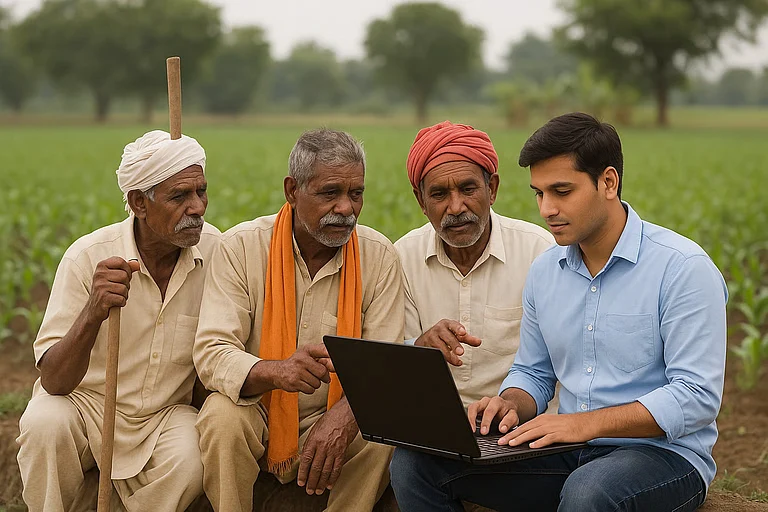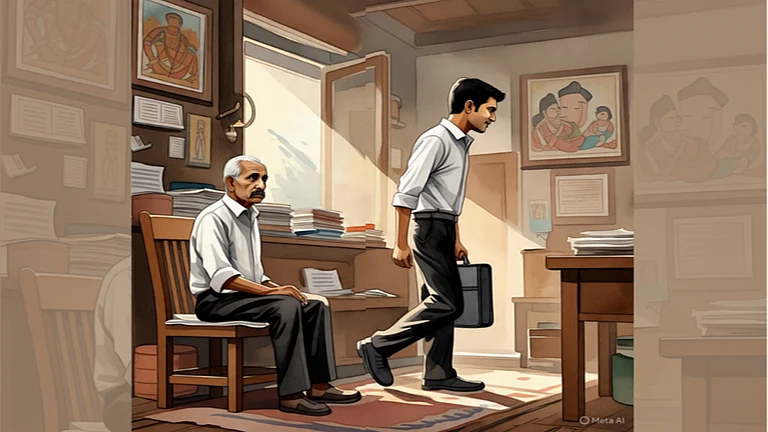If Prime Minister Narendra Modi announces an investment scheme in a video, saying beneficiaries can get up to Rs 1.25 lakh daily, should you believe it? Recently, a video of PM Modi was circulating on social media in which he talks about a scheme where an investor could receive up to Rs 1.25 lakh daily by investing just Rs 21,000. It is a deepfake video in which PM Modi looks real, but the scheme he discusses seems too good to be true. Noticing it, the Fact Check unit of the Press Information Bureau (PIB) posted a message on X (formerly Twitter) clarifying that the video is fake.
PIB's Fact Check unit wrote on X, "The video is digitally manipulated. No such investment scheme has been launched. PM Modi or the Government of India is NOT associated with any such platform!"
It even warned the readers and the viewers, "Don't let deepfakes fool you. Always VERIFY before you SHARE."
It is scary enough considering the number of Modi's followers on social media (more than 100 million on X), who are at risk of falling prey to such videos. But this is not a one-off deepfake video. Last year, the Reserve Bank of India's (RBI) former governor, Shaktikanta Das's deepfake video, went viral. It featured him giving financial advice and supporting certain investment schemes. Then, the RBI issued the notification declaring the video a deepfake.
What Is A Deepfake?
It is a serious concern for the users. Fortinet, a US-based cybersecurity company, describes Deepfake as 'a form of artificial intelligence (AI) that can be used to create convincing hoax images, sounds, and videos. The term "Deepfake" combines the deep learning concept with something fake."
So, when a video is manipulated and stitched with deceptive images and sounds, it creates the impression that the people in it look real.
How Easy Is It For Fraudsters To Deepfake A Video Or an Image?
Says Sanjay Kaushik, a cybersecurity expert and Managing Director of Netrika Consulting India Pvt. Ltd: "There are enough tools which are available at Rs 800 to a few thousand which can help one to make a deepfake video or an image. If you find it difficult to use these tools try to search the internet and your will find ample tutorials/blogs/articles which will help you to create the Deepfake. That's not all, you can find training on training sites like Udemy or step-by-step videos on YouTube, which will explain to you how to make a deepfake video or an image."
So, creating such videos is no more a job of cyber experts. But the skill in wrong hands means trouble for innocent people and those who are not aware of digital hacks or cybercrimes, such as senior citizens. Now, it is becoming increasingly difficult for them to decide what to believe and what not to believe.
How To Identify Whether A Video Or An Image Is A Deepfake?
A few of the red flags to identify whether a video is a deepfake or real, are:
Facial Expression: Deepfakes can look as real as possible at times, but there are still some indicators to be aware of. One key aspect to watch for is the eye movement of the person in the video. Many times, the eyes or eyelids do not move in a natural manner. One may also pay attention to the blinking of the eyes and whether they align with their speech and lip movements.
Skin Texture: Distinguishing the fake from the genuine is not as easy as it seems. If you doubt, take a close look and observe the skin texture in the image or video. It may look unnaturally smooth, overly fine, or wrinkled.
Kaushik advises, "Deepfakes can be identified by carefully looking at the facial, eye expression and lip movement though some of the high quality deepfake have been able to align the lip movement also. One has to carefully listen to Deepfake and see the choice of the words, language, is it the same the one uses at times a single word or expression can tell you it is or might be a deepfake, be suspicious all the time if it's not normal."
Too Good To Be True: Further, if the speech, scheme, or suggestion seems too good to be true, it is better to be skeptical and verify its authenticity. The purpose of deepfakes or any similar fraud is often to lure people into clicking on unsecured links.
How To Stay Deepfake-Protected?
"It's all about zero trust. Don't click anything which you don't trust. Do not click un-solicited links, links sent by unknown persons. If it's too sensational or asking personal information or money it might be fake, call the person and check or best ignore", suggests Kaushik.
So, if you come across any such image or a video, do not believe just because a prominent person is saying so and do not amplify it without verifying its authenticity.



















